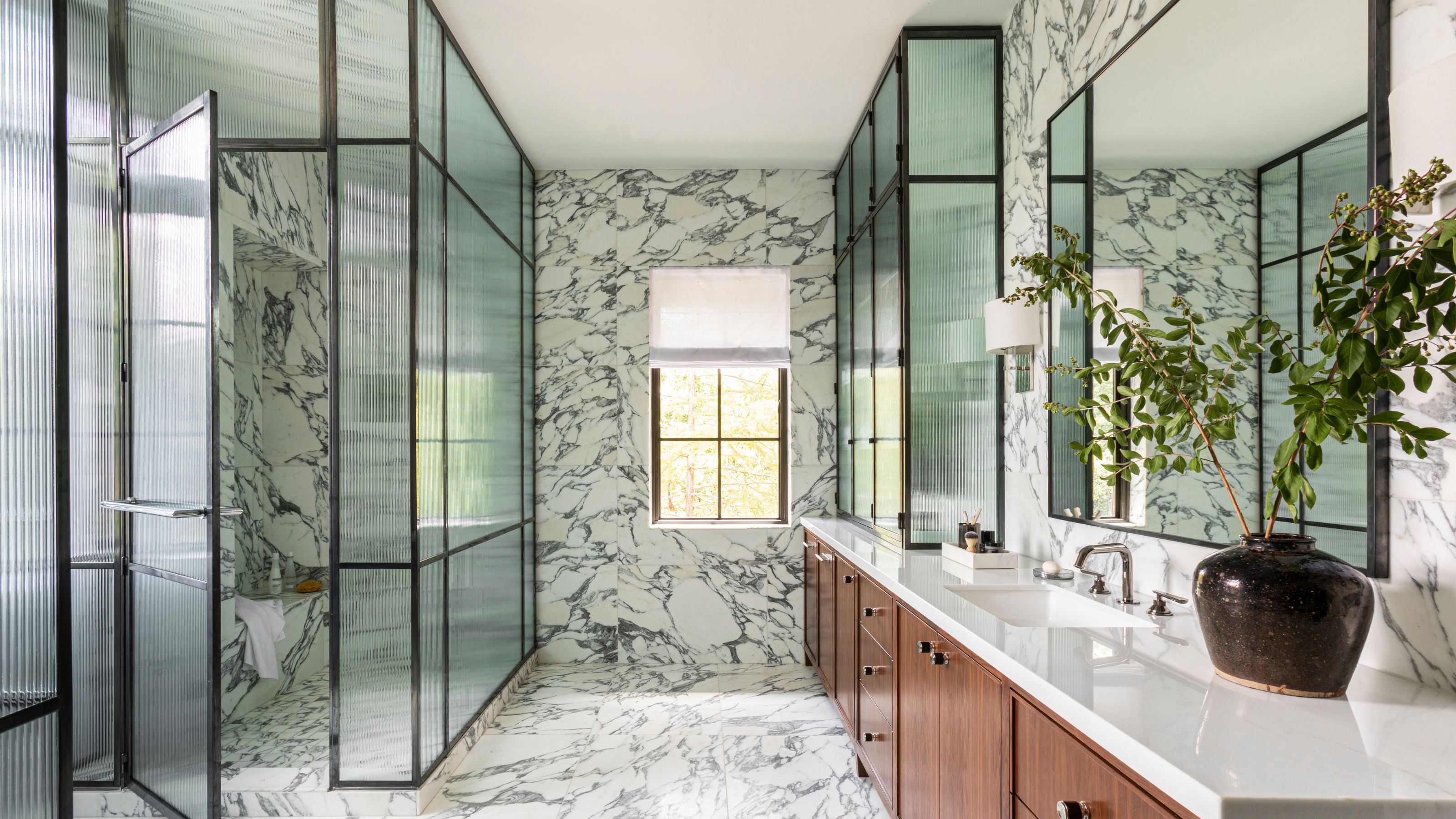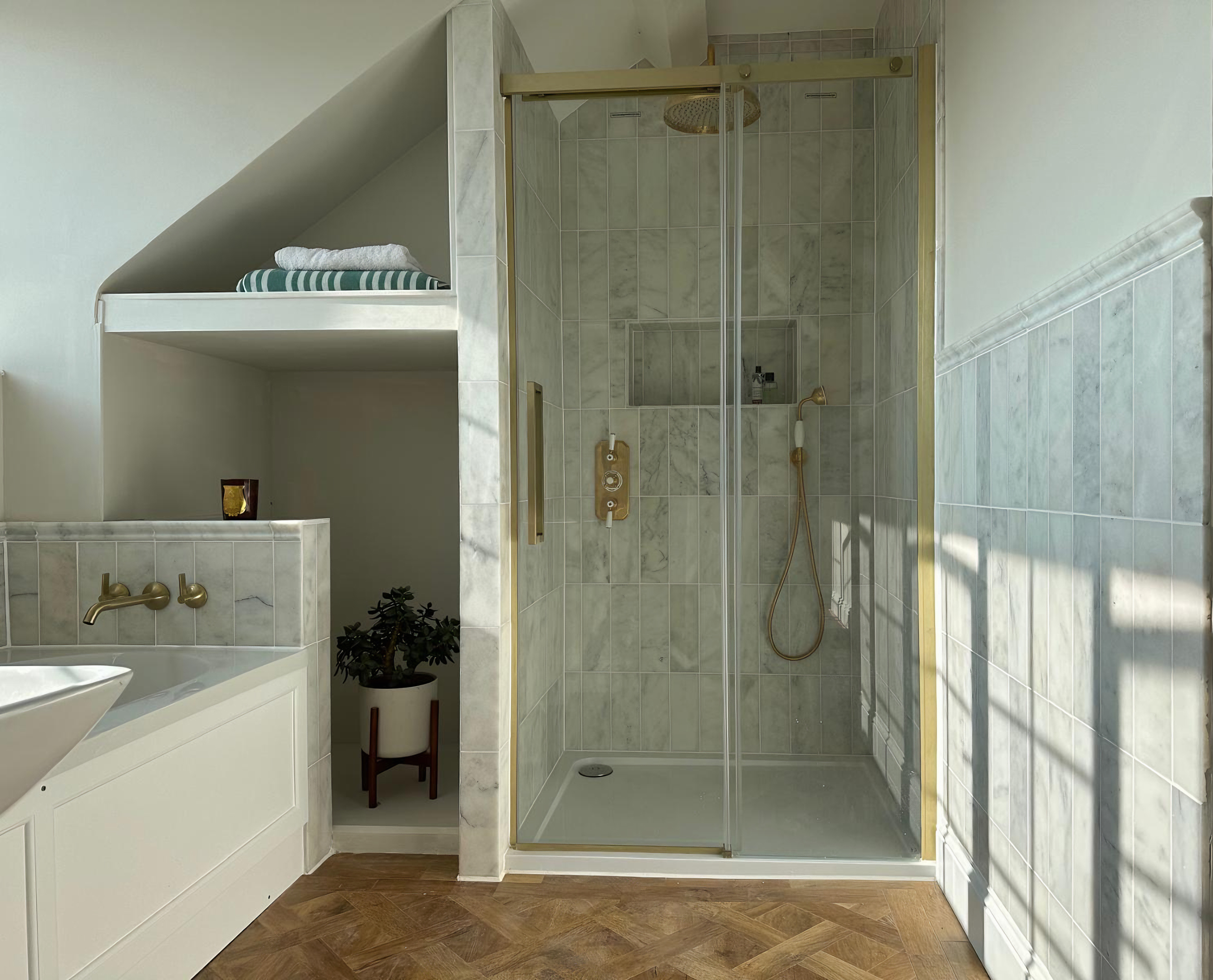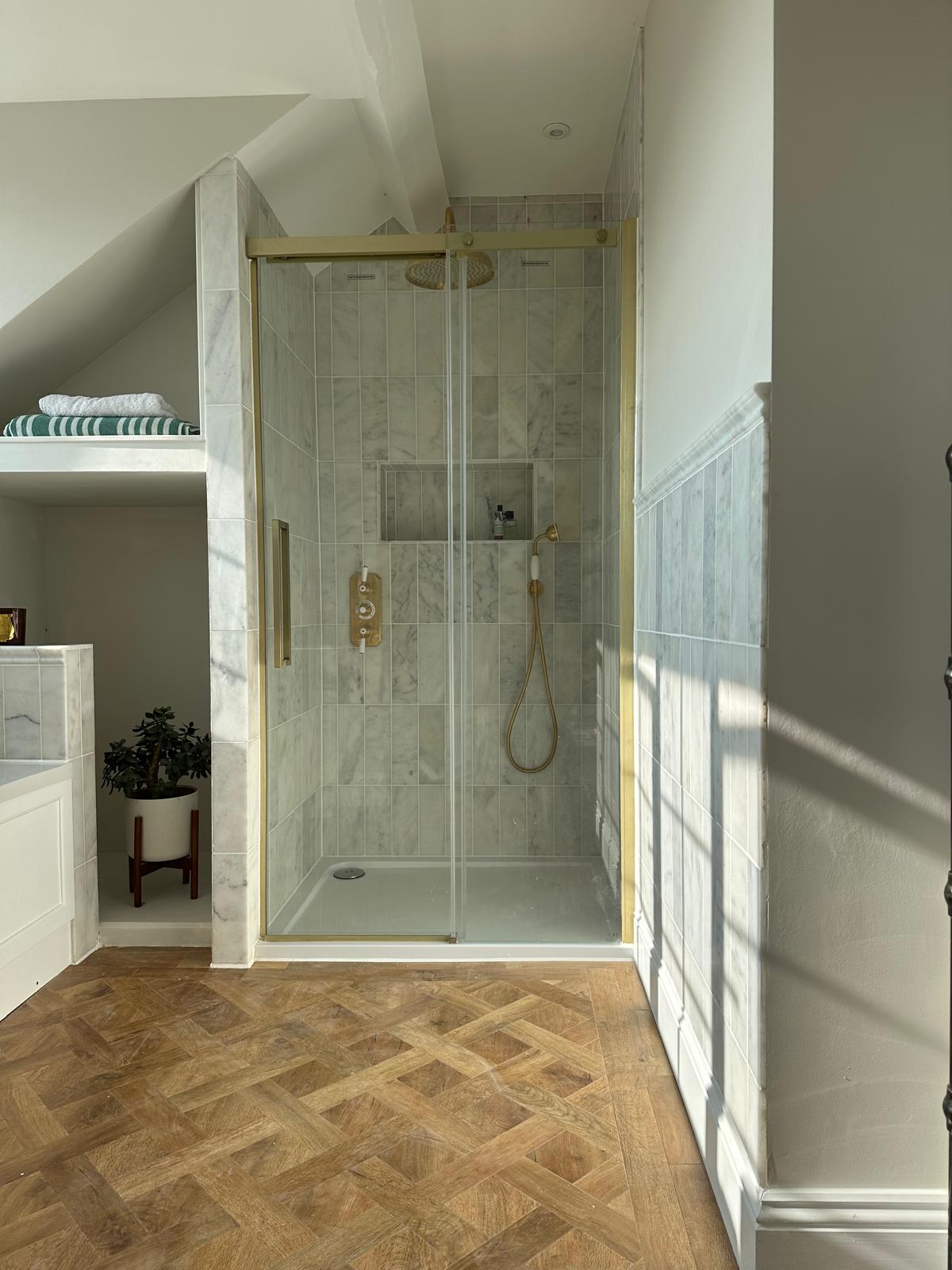
When it comes to any home project, there is one cardinal rule to live by: don't change the plan halfway through the job. But even though I know this, during my recent bathroom remodel, I broke that rule, and I still can't quite believe it. As a result, I have a compromised space that has flaws I should have anticipated and a disconnected flow. Here's how it happened, and how you can avoid it.
"Oh no, we don't want a bathtub," I said merrily for months, planning to utilize the tall end of the room (before the ceiling slopes as it's in our roof) for a spacious walk-in shower, with an equally luxe double vanity positioned in front of the window. With the WC tucked away in the corner, there really was no room for a tub, and I only really soak in one when I'm on vacation at a hotel.
But then the shower went in, and I started to think about life without a bath, and I got cold feet. Much to my contractor's frustration, I quickly reconfigured the floor plan, found room for a bath, and ordered the tub to be delivered the following week. And, oh, what a mistake that was.
The Problem

The trouble with shoehorning a bath into my space last minute is that it has left an awkwardly-shaped recess at the end of it; a space that has no function and has had to be taken over by a carefully positioned plant, for want of anything else.
In a smaller bathroom layout, where every square inch matters, this is unforgiveable. I plan to one day put a door over it so that the empty space is less noticeable (we need to retain access to the niche as important pipes are accessed through it), but had I planned for a bath at the beginning of the process, I wouldn't have put the shower where it now is, or perhaps I would have integrated the shower and bath along the side wall.
How to avoid the same mistake

"There is a rhythm to renovating, and it can be really rewarding when you get it right," says Layton Campbell of North Carolina-based studio, JLayton Interiors. "But that is as long as it's planned well, and anything you can plan and prep for is huge in that regard."
Ultimately, I should have planned for the fact that I would want a bathtub and designed the space I really wanted. "Ask yourself the most in-depth questions about what you want from the finished result before you start out," advises Layton. "Ask yourself how you'll use it, what time of day you'll be in it, where you'll want to do each task, and what those tasks will be.
"Think about ease of access for your products, and what side you might want them on, depending on whether you're left or right-handed," he adds. "Then the rest of the design should flow from there."
The right order to approach a remodel

"You better have a really good plan, and a very solid vision and be able to propose that and have your contractors understand it," says Layton, of the best way to start a bathroom remodel.
Once he's planned a room's basic requirements on how the homeowner will use the space, the next step is the electricals. "We do an electrical plan and an electrical walk-through, which you have to do before you start the wiring, so everyone understands where lights will be turned on," he adds. (Again, my last-minute bathtub threw my electrical plan out the window, as I had wanted task lighting around where the vanity was originally going to go. Another regret.)
Layton says that working out your storage needs is next. "In a shower, you might often do a niche in the wall for your products, and that has to be decided long before you tile and plumb," he says. You also need to consider what cabinetry you want, where it will go, and how to get the most out of the space.

It's important to notice how these fundamental considerations have all come well before any mention of color or finishes. "The bones of your project start before everything else," says Layton, adding that the paint colors and tile choices can usually be easily switched out up until the moment they're going on the wall. "A rough plumbing guide is key before you move onto materials," he says.
That's not to say that materials are an afterthought, though. "Choice of materials comes in early — the biggest thing to make the process go smoothly is to select all the materials before you even start getting contractors in," Layton says. "I will interview a client, and just talk to them and we will have a very in-depth conversation to find out what they like, whether they can cope with, say, how marble might age, or need something that won't take on a patina."
And it's not just beneficial for the designer and/or homeowner to know what materials are being used well before the project starts. "For the contractors, knowing what materials they'll be working with allows them to approach the project with a more clear state of mind," says Layton.
So, while I felt like I had planned my bathroom out perfectly, spending a lot of time on the fun stuff like the tiles and flooring choice, my lesson learned is that I really needed to think more holistically about how I wanted to use the space, rather than just how it would look.
"It's so much work on the front end, but if you can practically see the end result ahead of time, then it helps people to understand what they're going to get," says Layton. "And it should stop any alterations happening midway through."
Damn. If only I'd spoken to Layton first.







